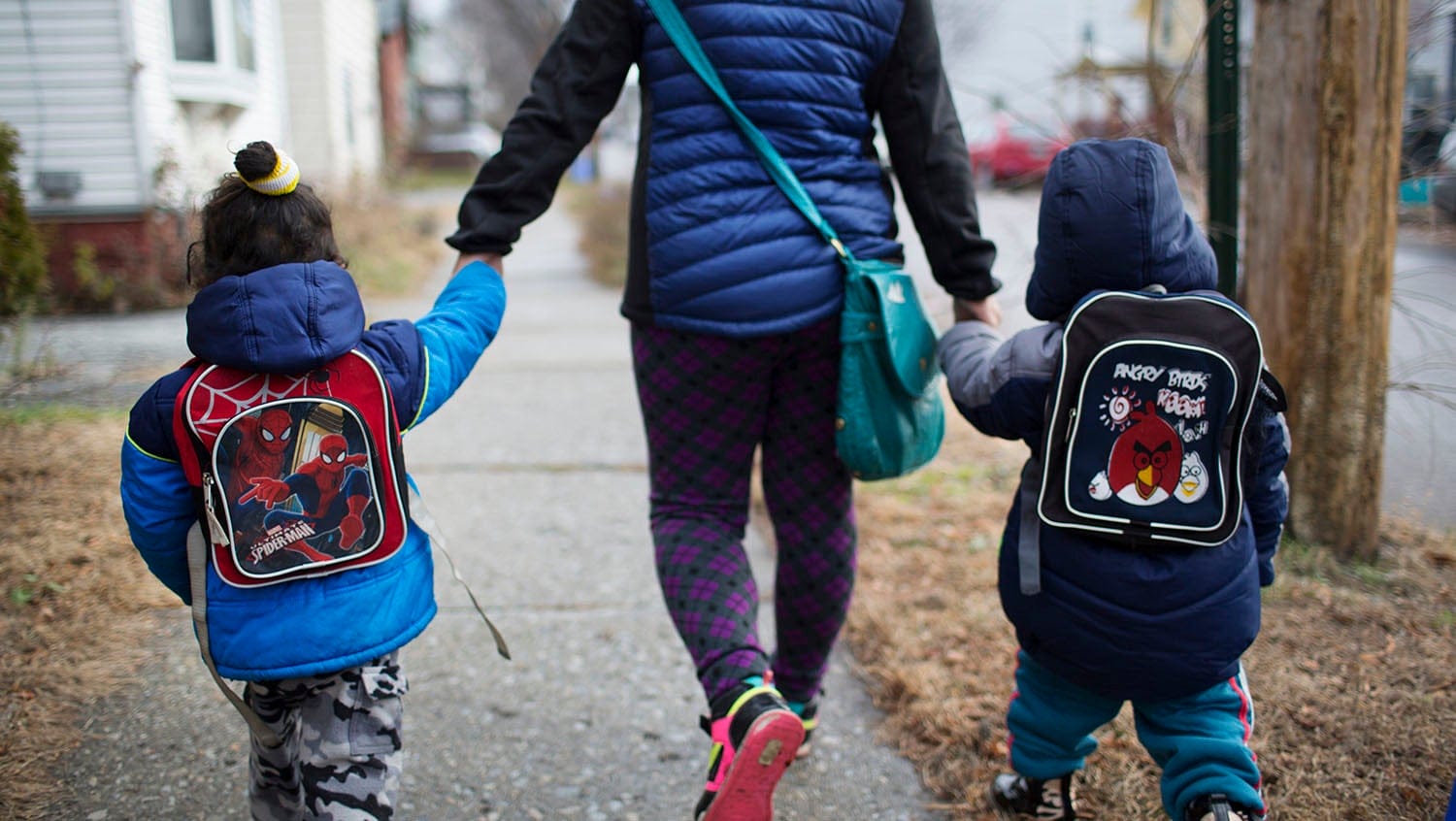To Ease the Effects of Rent Burden, Policymakers Should Look Beyond Affordable Housing Initiatives
May 24, 2019

Getty Images
Childcare costs, taxes, and eviction policies have an intertwined influence on housing stability, according to a new report from Children's HealthWatch.
Stable housing is vital to health and well-being. When families can’t secure affordable housing, fall behind on rent, move frequently, or experience homelessness, both children’s and parents’ health can suffer.
In Massachusetts, which has some of the highest housing costs in the nation, nearly 80% of families with extremely low incomes are rent-burdened, meaning housing costs eat up more than 30% of their income. What’s more, many rent-burdened families also struggle with high childcare costs, making it difficult for parents to participate fully in the workforce and lift their families out of poverty. Such families may face trade-offs between paying rent and paying for necessities such as food and home heating. For young children, the chronic stress of unstable housing can even affect brain development.
Increasing the supply of affordable housing isn’t enough by itself to help these families, according to a new report from Children’s HealthWatch, a national research organization headquartered at Boston Medical Center. The report, “Pathways to Stable Homes,” recommends a multipronged policy strategy — targeting childcare costs, tax credits, and eviction protections — to increase families’ spending power and safeguard against housing instability.
While individual state programs exist to ramp up housing production and provide tax credits and childcare subsidies, families and taxpayers need a more comprehensive strategy, said Ana Poblacion, PhD, MsC, lead author of the report, at a release event hosted by The Boston Foundation.
“We sought to identify solutions to complement and enhance existing efforts to reduce rent burden and housing instability,” said Poblacion, a research scientist with Children’s HealthWatch. “Our main lesson learned was that no single solution was enough to fill the gap between low wages and basic needs expenses in family budgets.”
Solutions that address the policy trapdoor
Existing policies need to work in concert to help families, the report suggests. When policies aren’t in sync, they can cause unintended consequences for families struggling to stay above water.
One example is that to maintain a childcare subsidy, parents must pay a childcare copayment, which can stress their budgets even with a sliding scale. Many families also experience the “cliff effect,” wherein an individual’s or family’s income goes up and results in the loss of the childcare subsidy — but the rise in wages is eclipsed by the lost benefit.
“Our policies should not be designed to create a trapdoor,” said Renee Boynton-Jarrett, MD, ScD, a BMC pediatrician and founder of the Vital Village Network, who moderated a panel discussion at the event.
The Boston Foundation-hosted Pathways to Stable Homes release event offered multiple-policy solutions for improving housing security and ensuring families have the resources to meet their basic needs.
HealthWatch conducted listening sessions with diverse stakeholders, followed by simulation modeling with a healthcare cost analysis. The resulting report, “Pathways to Stable Homes,” recommends three policies.
1. Expand childcare access. Expand affordable childcare access by eliminating the subsidy wait list, capping copay fees to no more than 7% of family income — the standard recommended by the Department of Health and Human Services — and eliminating the copay altogether for families with incomes below the federal poverty line (FPL).
2. Increase state matching of EITC. Increase the state match for the federal Earned Income Tax Credit (EITC) to 50% from the current level of 30%. The EITC is an effective way of supplementing the earnings of low-income working families and has been linked to improved infant and maternal health.
3. Create a rental arrears program to prevent eviction. Expand the state’s Residential Assistance for Families in Transition (RAFT) program to include a rental-arrears program to help vulnerable families avoid eviction if they fall on hard times or face emergency expenses.
Estimated outcomes and savings
The report outlines scenarios for two types of families living in four sample Massachusetts counties, which show how the policies could reduce or erase the gap between families’ incomes and their housing and childcare costs while also providing the state a hefty return on investment in avoided healthcare costs.
For a two-parent family of four with income of about $49,000 (or 200% of FPL), the research’s simulation shows that the proposed policies could erase the gap for a family in Worcester County and significantly narrow it in Suffolk County, which includes the high-rent market of Boston.
For the four sample counties together, the state would save an estimated $650,000 annually in avoidable healthcare costs. In the scenario of a single-parent family of three earning 130 percent of FPL, the potential savings amount to at least $1.4 million.
“This is because housing instability increases mothers’ odds of experiencing depressive symptoms, children’s odds of hospitalizations, and children’s and caregivers’ odds of being in fair or poor health,” Poblacion explained.
At the Boston Foundation event, State Representative Marjorie Decker spoke of growing up in poverty and has expressed support for the HealthWatch recommendations.
“We all need people to be fulfilling [families’] potential,” she said. “I think this report really highlights the need for a multi-pronged approach to not only help people survive, but thrive — and it’s doable.”


